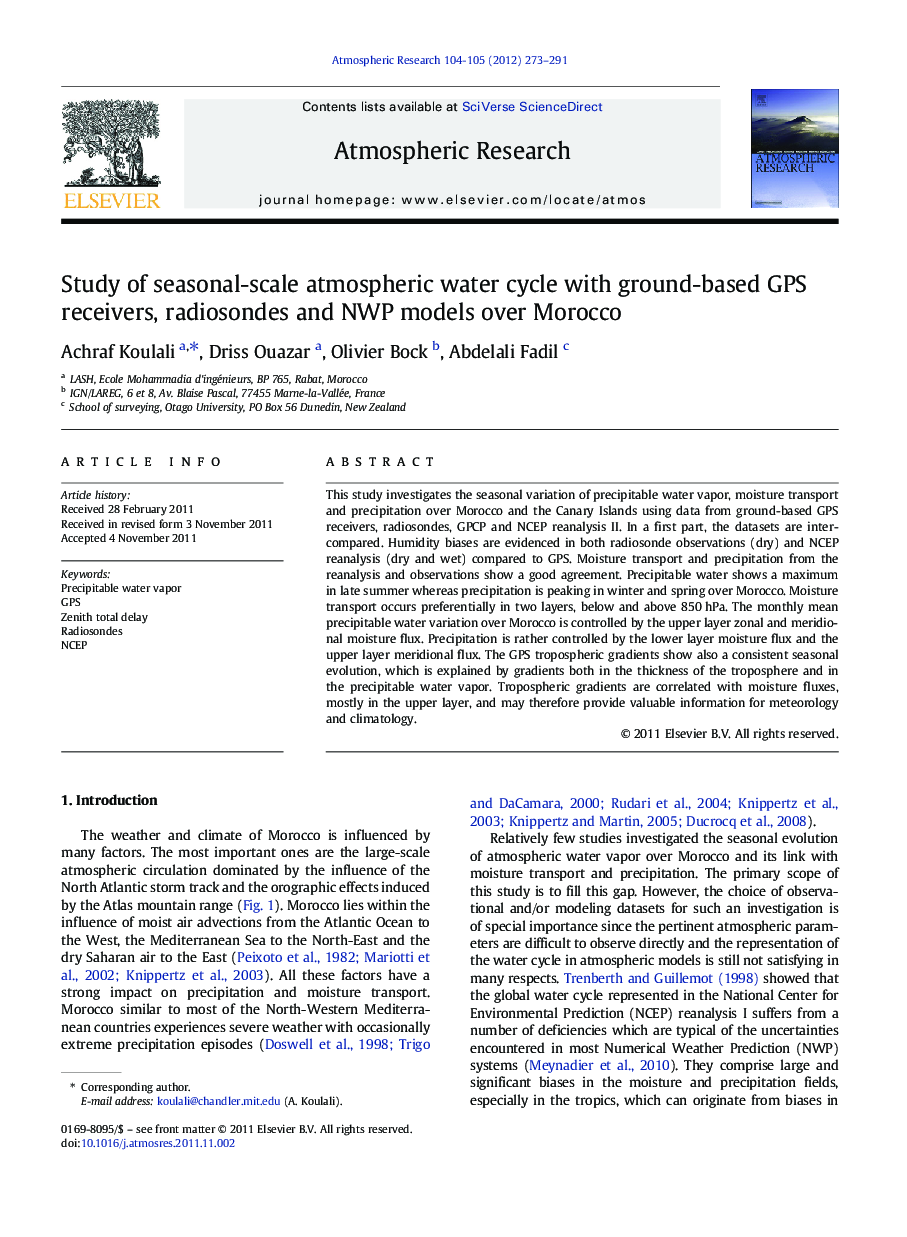| Article ID | Journal | Published Year | Pages | File Type |
|---|---|---|---|---|
| 6344090 | Atmospheric Research | 2012 | 19 Pages |
This study investigates the seasonal variation of precipitable water vapor, moisture transport and precipitation over Morocco and the Canary Islands using data from ground-based GPS receivers, radiosondes, GPCP and NCEP reanalysis II. In a first part, the datasets are inter-compared. Humidity biases are evidenced in both radiosonde observations (dry) and NCEP reanalysis (dry and wet) compared to GPS. Moisture transport and precipitation from the reanalysis and observations show a good agreement. Precipitable water shows a maximum in late summer whereas precipitation is peaking in winter and spring over Morocco. Moisture transport occurs preferentially in two layers, below and above 850Â hPa. The monthly mean precipitable water variation over Morocco is controlled by the upper layer zonal and meridional moisture flux. Precipitation is rather controlled by the lower layer moisture flux and the upper layer meridional flux. The GPS tropospheric gradients show also a consistent seasonal evolution, which is explained by gradients both in the thickness of the troposphere and in the precipitable water vapor. Tropospheric gradients are correlated with moisture fluxes, mostly in the upper layer, and may therefore provide valuable information for meteorology and climatology.
⺠We analyze the variation of water cycle parameters over Morocco and Canary Islands. ⺠Significant biases are evidenced in radiosonde and NCEP datasets compared to GPS. ⺠Two layers are contributing to the seasonal modulation of the total column flux. ⺠We show and explain the seasonal evolution in the GPS gradients.
